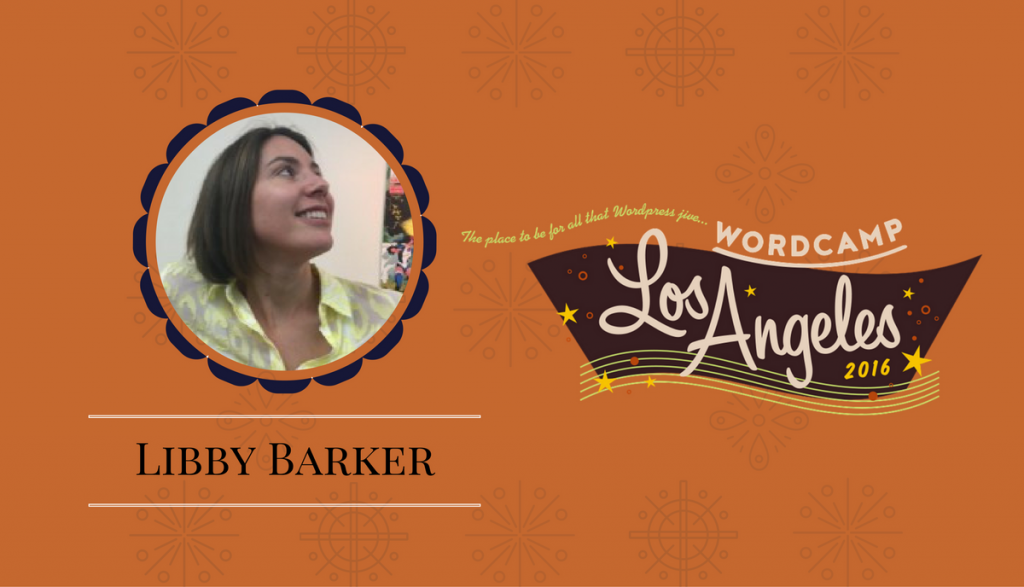Today we chat with WCLAX speaker Libby Barker, a Project Manager at Human Made, a global WordPress agency based in the UK.

Facilitating creative teams has always been a passion for Libby. After receiving her BFA in Film & TV, she worked for several years in media and communications for organizations such as as The Food Network, The Daily Show with Jon Stewart, Whitewall Magazine, and the Office of Nelson Rockefeller, Jr. In 2014, she took a job as a PM at WordPress agency Union Street Media and never looked back. In 2015, she received her Certification as a Scrum Product Owner. As a PM at Human Made, Libby works with a remote team to deliver outstanding sites for clients around the globe and actively seeks to implement Scrum and Agile methodologies tailor made to their workflow. When not working, she enjoys running, writing, and hiking with her husband in Vermont’s Green Mountains.
What should we know about you that you haven’t included in your brief, third-person, professional biography?
I’m a sucker for puns. The worse, the better. It’s almost compulsive. Maybe I’ll have an opportunity elicit some cringes while I’m visiting LA.
You’re stuck on a desert island with a small group of friendlies and your vast knowledge of all things SCRUM. What do you do first to ensure you your group survives?
Uh oh! First, we’d need to have a Backlog Refinement meeting. On a desert island, this would mean assessing our individual strengths, compiling a list of all tasks we need to accomplish in order to survive, and prioritizing the tasks. Launch critical issues (shelter, finding water and food sources, finding fuel for fire) would be right at the top of the list followed by ongoing tasks. The team would self-select tasks based on their strengths, and I would work with the team to identify obstacles (I imagine there would be a few!) to accomplishing their tasks. After this first meeting, we’d move forward daily stand-ups, of course, and weekly retrospectives to iterate on our survival strategy.
What’s one common mistake or pitfall you’ve seen teams new to SCRUM make and how can those teams avoid that mistake moving forward?
A common pitfall is that teams new to SCRUM (or other Agile methodologies) tend to get sidetracked with the aesthetics of Agile. By the aesthetics of Agile, I mean debating which Agile methodology to use, which Agile software to use, how to apply SCRUM roles to team members, how long sprints should be, etc. At the end of the day, this is not what makes a team Agile. Agile is a philosophy about empowering teams, not imposing alternate frameworks. If your team wants to become Agile, take some time to absorb the Agile Manifesto and Agile principles. For managers, be prepared to step back and think of your role as one of facilitator and let your team direct the transition. Use the Manifesto as your compass and everything else will begin to take shape.
If I were to do one day hike in Vermont, where would it be and why?
I would love to hike Camel’s Hump! This is one of the most distinctive peaks in Vermont (it really looks like a camel’s hump!) and one of the highest.
Many teams have heard of SCRUM and see the benefits but maybe know where or how to get started. How’d you get started with SCRUM and what can we learn from your beginnings?
I was introduced to SCRUM by a colleague in my first role as a Project Manager. At the time, the team was suffering from major pain-points with communications as a result of a silo’d production process, which can be common in Waterfall workflows. I began researching ways to bring transparency to production using Agile techniques and made some progress based on my self-education, but participating in the SCRUM Product Owner Certification was a major breakthrough because I was able to get practical experience that I could bring back to the team.
There are so many resources available, it can be overwhelming to determine which is most appropriate for your team. The Agile Alliance and the SCRUM Alliance are the go-to organizations for the Agile community, but nothing compares with hands on experience. Meetups or User Groups are a great place to start but certification programs are helpful if you want to really understand the fundamentals. If you are willing to make a serious investment in the transition, hiring a coach to work with your team is also an option.
Head over to Club Alabam at 2:50pm on Sunday, September 11 at WordCamp Los Angeles 2016 to catch Libby’s puns and Agile Power: Agile Methodology for WordPress Development presentation and stick around for the Afternoon Business Panel (Moderated by Steve Zehngut) with Libby, Matt Cromwell, and Alex Vasquez in the same room at 3:30pm.